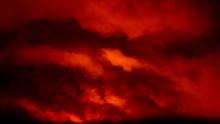Scientists are worried by how fast the climate crisis has amplified extreme weather
By Angela Dewan, CNN – Jul 20, 2021
Until recently, climate change had been talked about as a future threat. Its frontlines were portrayed as remote places like the Arctic, where polar bears are running out of sea ice to hunt from. Sea level rise and extreme drought was a problem for the developing world.
But in the past month, it’s been the developed world on the frontline.
In the past four weeks, floods in Germany engulfed streets and swallowed homes that had stood for more than a century in the quiet village of Schuld. A Canadian town of just 250 — known more for its cool, mountain air — burned to the ground in a wildfire that followed unprecedented heat.
And in the western United States, just weeks after a historic heatwave, some 20,000 firefighters and personnel have been deployed to extinguish 80 large fires that have consumed more than 1 million acres (4,047 square kilometers).
Climate scientists have for decades warned that the climate crisis would lead to more extreme weather. They said it would be deadly and it would be more frequent. But many are expressing surprise that heat and rain records are being broken by such large margins.
Since the 1970s, scientists have predicted the extent to which the world would warm fairly accurately. What’s harder for their models to predict — even as computers get more and more powerful — is how intense the impact will be.
Michael E. Mann, the director of the Earth System Science Center at Penn State University, told CNN the past few weeks have showed the limitation of climate change models.
“There is an important factor with many of these events, including the recent ‘heat dome’ event out west, that the climate models don’t capture,” Mann said. “The models are underestimating the magnitude of the impact of climate change on extreme weather events.”
In climate models, Mann explained, day-to-day weather is just noise. It looks a lot like chaos. It’s only the most extreme events that stand out as a clear signal.
“The signal is emerging from the noise more quickly” than models predicted, Mann said. “The [real world] signal is now large enough that we can ‘see’ it in the daily weather,” even though the models didn’t see it coming.







